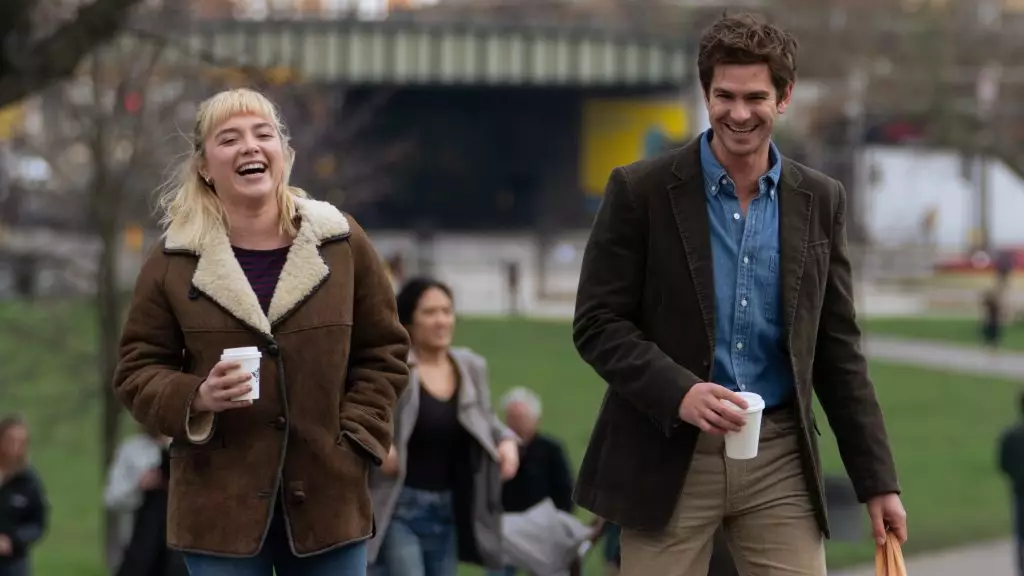In the recent A24 film “We Live in Time,” Andrew Garfield and Florence Pugh navigate a raw and chaotic birthing scene that epitomizes both the absurdity and poignancy of life’s unpredictable moments. In a revealing interview with The New York Times, Garfield shared insights into the challenges of filming a sequence that juxtaposes the mundane with the profound—in a gas station bathroom, no less. The ambitious undertaking required not only technical skill but also a willingness to embrace the uncomfortable realities of life.
What sets this scene apart is its amalgamation of humor, tension, and emotion. Garfield likens it to an “Indiana Jones sequence,” hinting at the elevated stakes they wanted to capture. The film’s narrative follows the tumultuous romance between Garfield’s character, Tobias, and Pugh’s Almut as they grapple with serious life challenges. By placing a pivotal moment of life—childbirth—within such a restrictive environment, the filmmakers highlight the frenetic nature of existence itself. It becomes a microcosm of the couple’s own tumultuous relationship while offering a stark commentary on the unexpected crises that often manifest in the most unassuming settings.
The Art of Filming Chaos
Director John Crowley’s decision to recreate a petrol station bathroom on a soundstage shows a commitment to authenticity and detail. The meticulous two-day filming process that involved multiple takes illustrates the dedication required to achieve an effective depiction of chaos. Utilizing a doll for the bulk of the shooting before bringing in a real baby for the climactic moment encapsulates the delicate balance between realism and practicality in film. The addition of comedic relief through characters played by Nikhil Parmar and Kerry Godliman allows the scene to breathe—a clever contrast to the intense situation at hand.
Garfield’s reflections on the scene reveal an essential philosophical about the unpredictability of life and the beauty that often lies within chaotic experiences. His willingness to be empathetic in the face of unexpected events, such as a baby’s natural bodily functions, showcases an admirable maturity in his approach to acting. This attitude presents an interesting dynamic within the film, as it mirrors Tobias’s own journey of embracing vulnerability amid life’s messiness. Garfield considers those surprising moments as the truest form of life, and this acknowledgment not only enriches his performance but also adds depth to the narrative.
A Collaborative Endeavor
The intimate nature of the scenes extends beyond the physical setting; Garfield and Pugh’s partnership shines as they navigate the complexities of the script together, reinforcing the importance of communication in both performance and relationships. By sharing their experiences and processing the intensity of the filming, they cultivate a bond that enhances the authenticity of their on-screen relationship. This collaborative effort not only elevates their performances but also creates a sense of intimacy that resonates with the audience.
“We Live in Time” challenges traditional depictions of romance and life’s milestones by placing characters in absurd and chaotic situations. Garfield’s insights into the birthing scene reveal a deeper narrative about love, unpredictability, and the primal nature of life itself, offering viewers a thought-provoking experience that will linger long after the credits roll.

